Shake off the winter blues with December’s birthstones! There is a gem for every budget in the happiest time of the year, and all in 50 shades of blue. From the traditional birthstones of turquoise and lapis lazuli to the sparkly, modern alternatives of tanzanite, blue zircon, and blue topaz, you can have the 12 days of birthstones to celebrate! Just want one to give your sweetheart for their birthday but don’t know where to start? We got you! Let’s look through all of our options together.
Traditional Birthstones
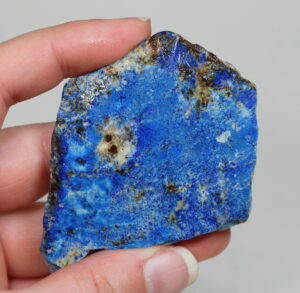 First up, we have the traditional gems of turquoise and lapis lazuli. Lapis for short, is a deep blue metamorphic rock that has been prized for its intense color that is reminiscent of the night sky. Named for the Latin word for “stone” and lazulum, which derives to “sky” or “heaven”. The most prominent mineral within this gem in lazurite, but it commonly contains varying levels of calcite (white), Sodalite (blue), and pyrite (gold). In the Middle Ages, it began being exported to Europe, where it was ground into powder and made into ultramarine—the most expensive of all blue pigments. Artists in the Renaissance and Baroque eras used this fine pigment in their paintings, where it was generally reserved for central figures; particularly the Virgin Mary. This gem is prized for not just its mesmerizing color, but also for its historical significance. It was used extensively by ancient civilizations such as the Egyptians, Sumerians, and Greeks, where it adorned the tombs of pharaohs and was commonly featured in ceremonial jewelry. For example, it was used in the funeral mask of none other than Tutankhamun.
First up, we have the traditional gems of turquoise and lapis lazuli. Lapis for short, is a deep blue metamorphic rock that has been prized for its intense color that is reminiscent of the night sky. Named for the Latin word for “stone” and lazulum, which derives to “sky” or “heaven”. The most prominent mineral within this gem in lazurite, but it commonly contains varying levels of calcite (white), Sodalite (blue), and pyrite (gold). In the Middle Ages, it began being exported to Europe, where it was ground into powder and made into ultramarine—the most expensive of all blue pigments. Artists in the Renaissance and Baroque eras used this fine pigment in their paintings, where it was generally reserved for central figures; particularly the Virgin Mary. This gem is prized for not just its mesmerizing color, but also for its historical significance. It was used extensively by ancient civilizations such as the Egyptians, Sumerians, and Greeks, where it adorned the tombs of pharaohs and was commonly featured in ceremonial jewelry. For example, it was used in the funeral mask of none other than Tutankhamun. 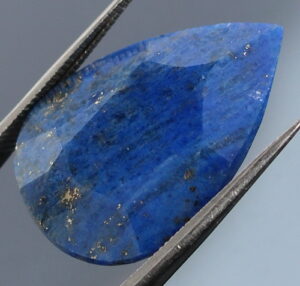 Lapis lazuli is believed to possess metaphysical properties like stimulating creativity, enhancing self-awareness, and promoting harmony in relationships. It also has been associated with qualities such as wisdom, truth, and communication, making this gem a very thoughtful gift.
Lapis lazuli is believed to possess metaphysical properties like stimulating creativity, enhancing self-awareness, and promoting harmony in relationships. It also has been associated with qualities such as wisdom, truth, and communication, making this gem a very thoughtful gift.
Persian poem by Ferdowsi:
As the sun struck the dome of lazuli,
A golden curtain was drawn, most truly.

Turquoise is another gemstone that has been used in jewelry for thousands of years. Historians have been able to trace its use back to 4000 BC! The Aztecs believed that turquoise was the favorite gem of Quetzalcoatl, the god of wind. They presented it to Cortez in 1519 as they were convinced that he was their god of wind in human form. While this gem may not possess the crystalline structure of most other gemstones, it has a unique look that is popular in southwestern jewelry and valuable in Native American culture.  The Apache thought turquoise could be found by following a rainbow to its end and digging through the wet soil, which only makes sense that it is associated with luck, good fortune, and friendship. They also believed that attaching turquoise to a bow made that hunter’s aim more accurate. What it may lack in clarity and sparkle is made up for in bold green and blue hues that are sure to capture attention. Some contain matrices that spread across the stone giving it depth and character, while others are solid colors that, when polished, look like a piece of the sky has fallen just for you. It is said that this purification birthstone protects the wearer from evil and is thought to encourage people to fall in love. What a perfect gem for the Christmas season!
The Apache thought turquoise could be found by following a rainbow to its end and digging through the wet soil, which only makes sense that it is associated with luck, good fortune, and friendship. They also believed that attaching turquoise to a bow made that hunter’s aim more accurate. What it may lack in clarity and sparkle is made up for in bold green and blue hues that are sure to capture attention. Some contain matrices that spread across the stone giving it depth and character, while others are solid colors that, when polished, look like a piece of the sky has fallen just for you. It is said that this purification birthstone protects the wearer from evil and is thought to encourage people to fall in love. What a perfect gem for the Christmas season!
Modern Birthstones
 Blue zircon is the first of our modern December birthstones that shines alongside blue topaz and tanzanite among the Christmas lights. While it may be considered modern in birthstone lists, this gem may just be the oldest mineral on Earth! A sample was found to be 4.4 billion years old according to a gemological find in Australia. Zircon, or zirconium silicate, is not to be confused with cubic zirconia, the diamond simulant that can be found in a good percentage of affordable jewelry.
Blue zircon is the first of our modern December birthstones that shines alongside blue topaz and tanzanite among the Christmas lights. While it may be considered modern in birthstone lists, this gem may just be the oldest mineral on Earth! A sample was found to be 4.4 billion years old according to a gemological find in Australia. Zircon, or zirconium silicate, is not to be confused with cubic zirconia, the diamond simulant that can be found in a good percentage of affordable jewelry.  Although, colorless zircon has been confused with diamonds for centuries due to its incredible brilliance and fire. Throughout history it has been admired, but not to the same degree of diamonds. In the Middle Ages, zircon was thought to be capable of lulling someone into a deep sleep and scaring off evil spirits. While it is often associated with luck and good fortune, many say that it promotes prudence and discipline which, in turn, presents positive outcomes. The value and beauty of zircon caught the attention of the gem buyer George Kunz, who worked for Tiffany & Co. He tried to bring blue zircon into the spotlight with an attempted name change to “starlite.” Even though he was unsuccessful, anyone who comes upon this December birthstone is not disappointed in its exquisiteness. Although most zircon is natural, a good percentage of blue zircon is actually heat treated to give it the well-loved blue coloration. It is said to be a gemstone for positivity and for removing negative energy. Zircon might just be what you need for your collection and for getting rid of the winter blues!
Although, colorless zircon has been confused with diamonds for centuries due to its incredible brilliance and fire. Throughout history it has been admired, but not to the same degree of diamonds. In the Middle Ages, zircon was thought to be capable of lulling someone into a deep sleep and scaring off evil spirits. While it is often associated with luck and good fortune, many say that it promotes prudence and discipline which, in turn, presents positive outcomes. The value and beauty of zircon caught the attention of the gem buyer George Kunz, who worked for Tiffany & Co. He tried to bring blue zircon into the spotlight with an attempted name change to “starlite.” Even though he was unsuccessful, anyone who comes upon this December birthstone is not disappointed in its exquisiteness. Although most zircon is natural, a good percentage of blue zircon is actually heat treated to give it the well-loved blue coloration. It is said to be a gemstone for positivity and for removing negative energy. Zircon might just be what you need for your collection and for getting rid of the winter blues!
 Our next birthstone for this chilly month is blue topaz. While this is the most common color seen in jewelry, topaz actually comes in a wide range of hues. In its natural state, topaz is typically colorless, though it can sometimes naturally display pale blue, golden brown, or yellow orange colors. The luscious hues that fill the market are often treated gems by either heat or radiation; a common practice that creates the desirable birthstone gems.
Our next birthstone for this chilly month is blue topaz. While this is the most common color seen in jewelry, topaz actually comes in a wide range of hues. In its natural state, topaz is typically colorless, though it can sometimes naturally display pale blue, golden brown, or yellow orange colors. The luscious hues that fill the market are often treated gems by either heat or radiation; a common practice that creates the desirable birthstone gems.  The different types of topaz are categorized by color, however there are a few specific types that have broader names such as Imperial topaz or Sherry topaz, named after the sherry wine. There are many legends that surround topaz throughout history. For example, ancient Romans believed that it could provide protection from danger while traveling, while Englishmen thought that it could cure lunacy. In the Middle Ages, it was thought that attaching the gem to the left arm could protect the wearer from any curse and would ward off the evil eye while enhancing mental powers. In Hindu mythology, it was linked to the blue throat of the God Shiva, symbolizing communication and self-expression. While history anchors topaz in tradition, its contemporary symbolism reflects modern sensibilities. This blue gemstone is often associated with communication, truth, and inner peace. Its calming hues evoke tranquility, making this December birthstone a popular choice for those seeking balance in their lives. Topaz is also typically a very affordable gem, so obtaining a larger, clean piece is very obtainable. Good news for anyone looking for a birthday gift!
The different types of topaz are categorized by color, however there are a few specific types that have broader names such as Imperial topaz or Sherry topaz, named after the sherry wine. There are many legends that surround topaz throughout history. For example, ancient Romans believed that it could provide protection from danger while traveling, while Englishmen thought that it could cure lunacy. In the Middle Ages, it was thought that attaching the gem to the left arm could protect the wearer from any curse and would ward off the evil eye while enhancing mental powers. In Hindu mythology, it was linked to the blue throat of the God Shiva, symbolizing communication and self-expression. While history anchors topaz in tradition, its contemporary symbolism reflects modern sensibilities. This blue gemstone is often associated with communication, truth, and inner peace. Its calming hues evoke tranquility, making this December birthstone a popular choice for those seeking balance in their lives. Topaz is also typically a very affordable gem, so obtaining a larger, clean piece is very obtainable. Good news for anyone looking for a birthday gift!
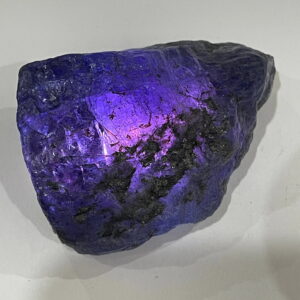 Our final birthstone to wrap up our modern options is tanzanite. This gemstone is relatively new to the gemology world and even newer to the birthstone list. However, it has come to be a definite favorite! The discovery of tanzanite was one of the most exciting gem finds of the 20th century. Emerging from Tanzania in 1962, these blue violet stones were identified as the mineral zoisite, but it wasn’t until 1967 that the primary source was located in the Merelani Hills. The stone was named in honor of its origin country and is prized for its deep and saturated color, which ranges from rich blue to violet. The bluer the gem, the more valuable it is. When shown in different lighting, the colors dance and change right before your eyes. In warmer lighting, it leans closer to violet while in cool lighting it will shift to bluer tones. But in order to gain this stunning color-change ability, the mineral zoisite, must be heated to high temperatures. This heating process, whether natural or done in a lab, causes zoisite to change from a dull orange brown into a tantalizing tanzanite. In 1968, Tiffany & Co. launched a major advertising campaign to promote it after becoming its main distributor. Of course, it became a sensation and has been gaining popularity ever since.
Our final birthstone to wrap up our modern options is tanzanite. This gemstone is relatively new to the gemology world and even newer to the birthstone list. However, it has come to be a definite favorite! The discovery of tanzanite was one of the most exciting gem finds of the 20th century. Emerging from Tanzania in 1962, these blue violet stones were identified as the mineral zoisite, but it wasn’t until 1967 that the primary source was located in the Merelani Hills. The stone was named in honor of its origin country and is prized for its deep and saturated color, which ranges from rich blue to violet. The bluer the gem, the more valuable it is. When shown in different lighting, the colors dance and change right before your eyes. In warmer lighting, it leans closer to violet while in cool lighting it will shift to bluer tones. But in order to gain this stunning color-change ability, the mineral zoisite, must be heated to high temperatures. This heating process, whether natural or done in a lab, causes zoisite to change from a dull orange brown into a tantalizing tanzanite. In 1968, Tiffany & Co. launched a major advertising campaign to promote it after becoming its main distributor. Of course, it became a sensation and has been gaining popularity ever since. 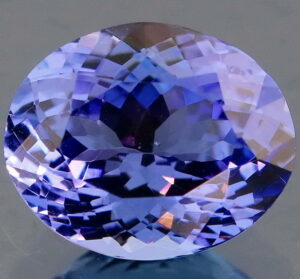 Today, not only is it a December birthstone, but it is also the gem for the 24th wedding anniversary. With tanzanite being found in just the one locality, it is more expensive than its fellow December birthstones for premium color and ample size. In fact, they are much rarer than diamonds! Tanzanite is said to have amazing physical and mental healing properties; for example, it is believed to detoxify the blood relieve your mind of fears, and revitalize your life. Its also said to promote thoughtfulness and be representative of wisdom and self-control (which some of us can definitely use during the holiday season). This gem is an absolutely stunning option for representing your birth month, and Backroom Gems can help you find one at an amazing price!
Today, not only is it a December birthstone, but it is also the gem for the 24th wedding anniversary. With tanzanite being found in just the one locality, it is more expensive than its fellow December birthstones for premium color and ample size. In fact, they are much rarer than diamonds! Tanzanite is said to have amazing physical and mental healing properties; for example, it is believed to detoxify the blood relieve your mind of fears, and revitalize your life. Its also said to promote thoughtfulness and be representative of wisdom and self-control (which some of us can definitely use during the holiday season). This gem is an absolutely stunning option for representing your birth month, and Backroom Gems can help you find one at an amazing price!
If you are shopping for someone with a December birthday, even though all the birthstone options are blue, you can’t go wrong with any of these options! Ranging from the oldest on Earth to the most recently mined, traditional or modern, each of these gemstones present a unique beauty that can be matched with the personality of your Sagittarius. Just because the gemstones are blue, doesn’t mean your Christmas has to be. Visit Backroom Gems to find the perfect December birthstone!
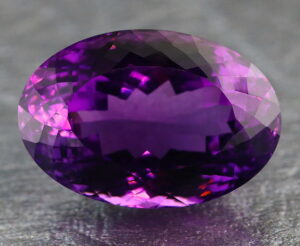 While several of the months have more than one birthstone to choose from, February shines in all of its purple glory with amethyst being the star of the show. In the last century amethyst has been the one and only gem for Pisces all over the world. In years prior, however, hyacinth and pearl were also part of the birthstone calendar! It dropped off after the 20th century and since then Valentine’s babies have been sporting shades of purple. Luckily shopping for February’s gem is very easy as it is one of the most abundant gemstones in the world.
While several of the months have more than one birthstone to choose from, February shines in all of its purple glory with amethyst being the star of the show. In the last century amethyst has been the one and only gem for Pisces all over the world. In years prior, however, hyacinth and pearl were also part of the birthstone calendar! It dropped off after the 20th century and since then Valentine’s babies have been sporting shades of purple. Luckily shopping for February’s gem is very easy as it is one of the most abundant gemstones in the world. Even though there are other gemstones that boast purple hues, such as sapphire and tanzanite, the one that is most commonly associated with this color is amethyst. Its hues can range from pale lilac to deep reddish purple that can sometimes be referred to as “raspberry.” The highest valued amethysts display a deep purple hue with red and blue flashes and are known as “Siberian amethysts.” This term was appropriately assigned to these coveted gems as they were pulled from a now depleted source in Siberia. Today, the term still applies to gems of this color all over the world.
Even though there are other gemstones that boast purple hues, such as sapphire and tanzanite, the one that is most commonly associated with this color is amethyst. Its hues can range from pale lilac to deep reddish purple that can sometimes be referred to as “raspberry.” The highest valued amethysts display a deep purple hue with red and blue flashes and are known as “Siberian amethysts.” This term was appropriately assigned to these coveted gems as they were pulled from a now depleted source in Siberia. Today, the term still applies to gems of this color all over the world.  Pale, pinkish violet, and lilac amethysts may not be as highly regarded in desire or price, but they definitely have their own appeal. Their color is referred to as “Rose de Franc” and they add a romantic touch to any jewelry piece! On the other side of the color wheel, we find the green variety of quartz that is often referred to as green amethyst. It has several other names aside from its scientific name (prasiolite) that includes vermarine and lime citrine. Although this variety is beautiful and would make the perfect accent piece for your night out on St. Patrick’s Day, you may want to stick with the purple hues when gifting the February birthstone.
Pale, pinkish violet, and lilac amethysts may not be as highly regarded in desire or price, but they definitely have their own appeal. Their color is referred to as “Rose de Franc” and they add a romantic touch to any jewelry piece! On the other side of the color wheel, we find the green variety of quartz that is often referred to as green amethyst. It has several other names aside from its scientific name (prasiolite) that includes vermarine and lime citrine. Although this variety is beautiful and would make the perfect accent piece for your night out on St. Patrick’s Day, you may want to stick with the purple hues when gifting the February birthstone. There are many countries around the world that currently have productive deposits of amethyst such as Bolivia, Uruguay, Zambia, Canada, India, Mexico, Sri Lanka, and even the United States! However, before the discovery of the deposits in Brazil in the 19th century, the gem was rare and was even part of the Cardinal Gemstones alongside ruby and sapphire. Prior to this discovery, Russia was the leader in the global production of amethyst. After the find, amethyst was demoted to a semi-precious gem and its value significantly lowered. This is good news for anyone looking to purchase amethyst as it is now widely available!
There are many countries around the world that currently have productive deposits of amethyst such as Bolivia, Uruguay, Zambia, Canada, India, Mexico, Sri Lanka, and even the United States! However, before the discovery of the deposits in Brazil in the 19th century, the gem was rare and was even part of the Cardinal Gemstones alongside ruby and sapphire. Prior to this discovery, Russia was the leader in the global production of amethyst. After the find, amethyst was demoted to a semi-precious gem and its value significantly lowered. This is good news for anyone looking to purchase amethyst as it is now widely available! So, try not to wear it in the sauna or on your hike in the Bahamas. It is a relatively hard gemstone rating 7 out of 10 on the Moh’s Hardness Scale. This means that it will hold up to everyday wear and tear and is easy to clean with warm water and dish soap. For the love in your life, this gem makes the perfect gift. Appropriately, legend says that St. Valentine himself wore an amethyst ring carved with Cupid’s portrait. This could be why amethyst has always been one or the only birthstone for February as it signifies love and is believed to balance emotions and clear the mind. If you find yourself in need of amethyst in any hue, visit Backroom Gems and find your perfect gemstone today!
So, try not to wear it in the sauna or on your hike in the Bahamas. It is a relatively hard gemstone rating 7 out of 10 on the Moh’s Hardness Scale. This means that it will hold up to everyday wear and tear and is easy to clean with warm water and dish soap. For the love in your life, this gem makes the perfect gift. Appropriately, legend says that St. Valentine himself wore an amethyst ring carved with Cupid’s portrait. This could be why amethyst has always been one or the only birthstone for February as it signifies love and is believed to balance emotions and clear the mind. If you find yourself in need of amethyst in any hue, visit Backroom Gems and find your perfect gemstone today!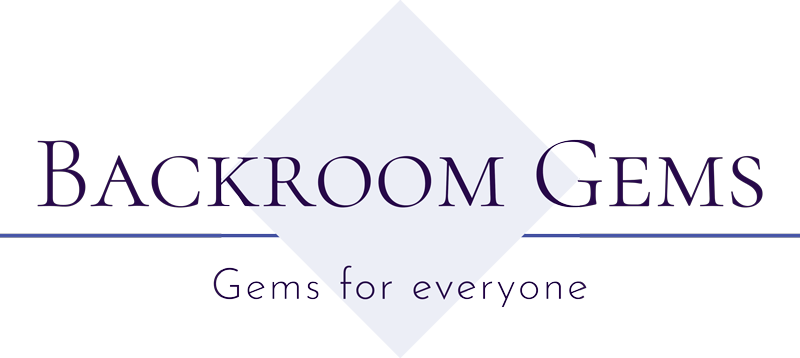
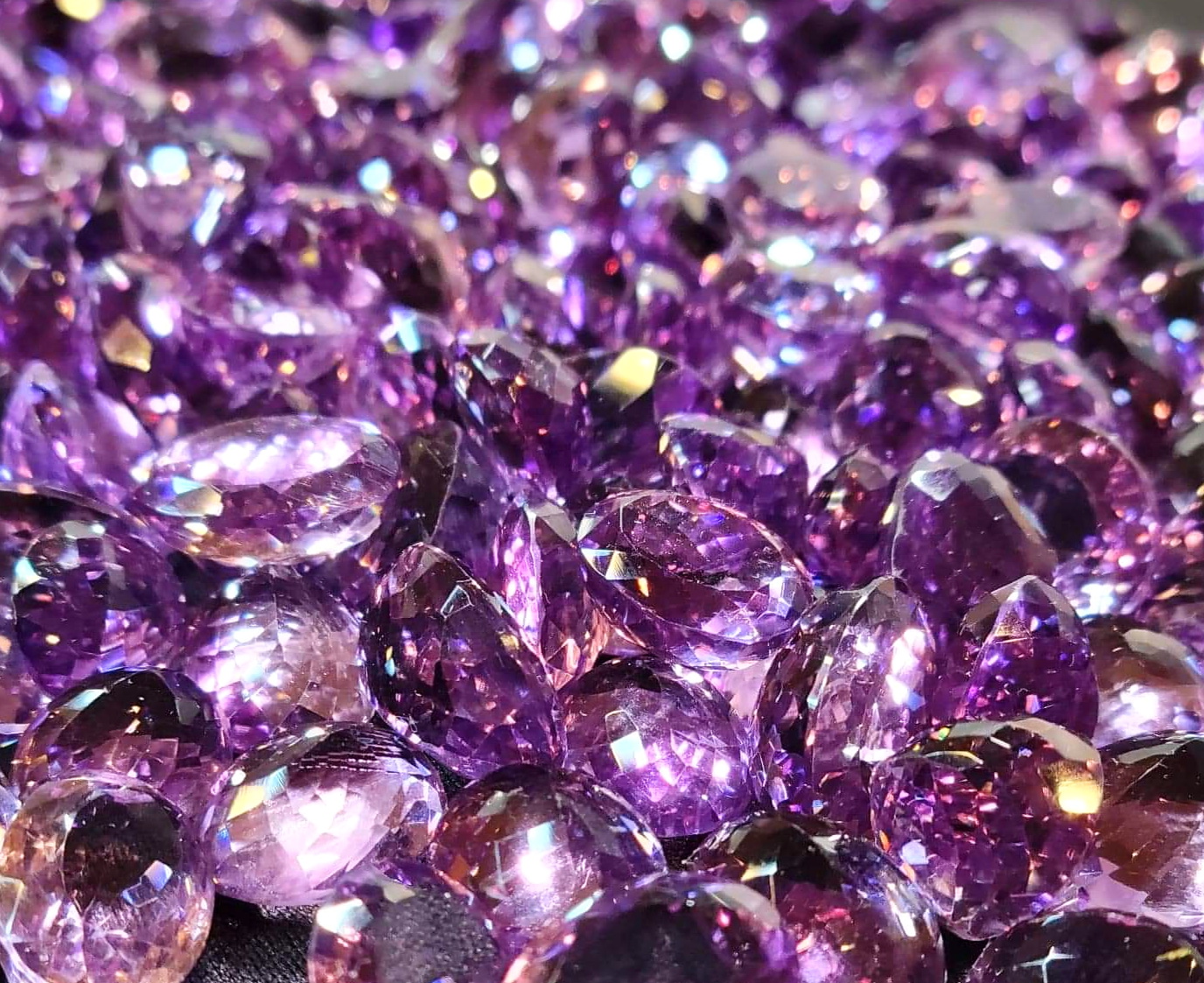
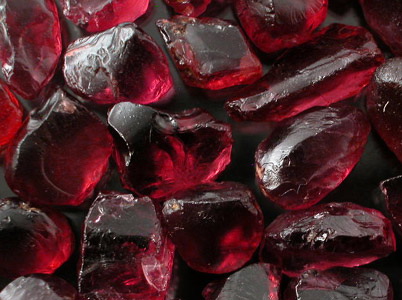
 When most people hear “garnet” their mind goes to the rich, deep red gem that we all know and love. Try to order any January birthstone jewelry and that’s the color that you will see! But what if you don’t like red? What if you want a gem that stands out from the typical garnet? Don’t worry, there’s options for you! The garnet family has many varieties that come in a range of colors, so there is something for everyone to enjoy and love.
When most people hear “garnet” their mind goes to the rich, deep red gem that we all know and love. Try to order any January birthstone jewelry and that’s the color that you will see! But what if you don’t like red? What if you want a gem that stands out from the typical garnet? Don’t worry, there’s options for you! The garnet family has many varieties that come in a range of colors, so there is something for everyone to enjoy and love.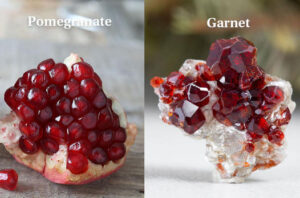 If you’ve seen the fruit and a specimen of uncut garnet, you can definitely see the resemblance! Another thought is that it derives from the 14th-century Middle English word gernet, meaning ‘dark red’. Regardless of where the word originates, this 2nd wedding anniversary stone has been a popular gem since the bronze age! Since ancient times, garnet’s traditional red color was associated with the heart and blood. Because of this, people believed garnets possessed the power to counter melancholy, compel the heart to great deeds, prevent hemorrhage, and improve circulation. In Persia garnets were considered a talisman from nature’s forces like storms and lightning. It was thought that garnet could signal approaching danger by turning pale.
If you’ve seen the fruit and a specimen of uncut garnet, you can definitely see the resemblance! Another thought is that it derives from the 14th-century Middle English word gernet, meaning ‘dark red’. Regardless of where the word originates, this 2nd wedding anniversary stone has been a popular gem since the bronze age! Since ancient times, garnet’s traditional red color was associated with the heart and blood. Because of this, people believed garnets possessed the power to counter melancholy, compel the heart to great deeds, prevent hemorrhage, and improve circulation. In Persia garnets were considered a talisman from nature’s forces like storms and lightning. It was thought that garnet could signal approaching danger by turning pale. The garnet family is one of the most complex in the gem world. This is because it is not a single species, but rather is composed of multiple species and varieties. In fact, there are more than twenty species of garnet, but only five of them are considered commercially important as gemstones. Those five include pyrope, almandine, spessartine, grossular (varieties of which are hessonite or cinnamon-stone and tsavorite), and andradite. Another species, uvarovite, is a green type that usually forms in crystals that are too small to cut. Although it can sometimes be seen set as clusters in jewelry.
The garnet family is one of the most complex in the gem world. This is because it is not a single species, but rather is composed of multiple species and varieties. In fact, there are more than twenty species of garnet, but only five of them are considered commercially important as gemstones. Those five include pyrope, almandine, spessartine, grossular (varieties of which are hessonite or cinnamon-stone and tsavorite), and andradite. Another species, uvarovite, is a green type that usually forms in crystals that are too small to cut. Although it can sometimes be seen set as clusters in jewelry.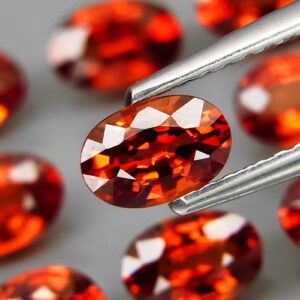 Spessartite is the yellow to orangish red form of garnet. The word spessartite is synonymous with spessartine, though they are used in different contexts. Spessartite is more frequently used in the gem trade, while spessartine is more often used in the mineral trade. The names derived from the Spessart Mountains in Bavaria, Germany where the gem originated. It is thought that spessartite garnets stimulate all aspects of creativity in both energy and ability, and also encourage the wearer to chase after their dreams, visions, and goals. It is also believed to induce optimism, confidence, and action.
Spessartite is the yellow to orangish red form of garnet. The word spessartite is synonymous with spessartine, though they are used in different contexts. Spessartite is more frequently used in the gem trade, while spessartine is more often used in the mineral trade. The names derived from the Spessart Mountains in Bavaria, Germany where the gem originated. It is thought that spessartite garnets stimulate all aspects of creativity in both energy and ability, and also encourage the wearer to chase after their dreams, visions, and goals. It is also believed to induce optimism, confidence, and action.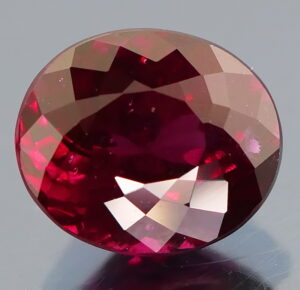 Rhodolite is a name for the variety of garnet that ranges in color from lavender pink to raspberry rose or raspberry red and from purplish violet (grape) to purplish red. It was first described in North Carolina with the Greek name “rhodon” in honor of its “rose-like” hue. Rhodolite garnet is said to encourage love, kindness, and compassion while promoting self-worth and stimulating intuition. It also is a gem of inspiration with fire energy, having an aura of passion and heat.
Rhodolite is a name for the variety of garnet that ranges in color from lavender pink to raspberry rose or raspberry red and from purplish violet (grape) to purplish red. It was first described in North Carolina with the Greek name “rhodon” in honor of its “rose-like” hue. Rhodolite garnet is said to encourage love, kindness, and compassion while promoting self-worth and stimulating intuition. It also is a gem of inspiration with fire energy, having an aura of passion and heat.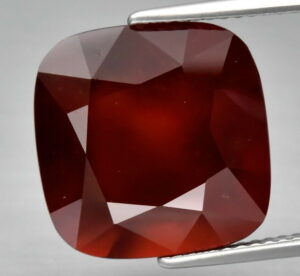 Hessonite garnet is a variety of grossular type that is most well-known for its warm yellowish red hue. While most grossularite is green, hessonite’s unique color has earned the gem the nickname cinnamon stone. The best-known deposits are in Sri Lanka, however it can be found in various other countries around the world, including the United States! It is believed to encourage a mellow vibe and have a strong spiritual value. Hessonite is also said to prevent the wearer from gossiping and promote success.
Hessonite garnet is a variety of grossular type that is most well-known for its warm yellowish red hue. While most grossularite is green, hessonite’s unique color has earned the gem the nickname cinnamon stone. The best-known deposits are in Sri Lanka, however it can be found in various other countries around the world, including the United States! It is believed to encourage a mellow vibe and have a strong spiritual value. Hessonite is also said to prevent the wearer from gossiping and promote success.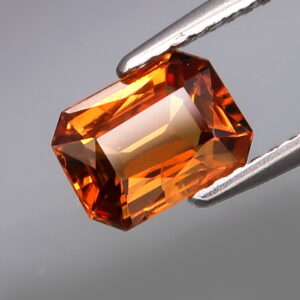 Malaya garnets have hues that range in pinkish orange, reddish orange, or yellowish orange and were first discovered in the 1960s in the Umba River Valley, which remains the primary source. The miners would cast aside these types of garnets since they didn’t fit into any categories that were purchased from buyers, thus giving them their title of outcast. It is believed that these garnets symbolize regeneration and resurrection and allow the wearer to regain lost energy.
Malaya garnets have hues that range in pinkish orange, reddish orange, or yellowish orange and were first discovered in the 1960s in the Umba River Valley, which remains the primary source. The miners would cast aside these types of garnets since they didn’t fit into any categories that were purchased from buyers, thus giving them their title of outcast. It is believed that these garnets symbolize regeneration and resurrection and allow the wearer to regain lost energy.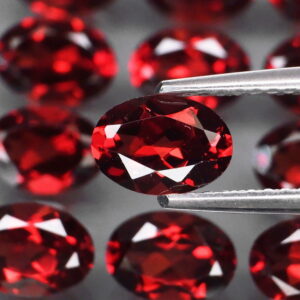 So, if you are searching for something to gift the Capricorn or Aquarius in your life, know that you have options! Even though January has only one birthstone, at least it’s one that has plenty of varieties and species to choose from. All you have to do is choose a color! If you want to go classic, you can never go wrong with the timeless, stunning red that garnet is famous for. There’s a reason it has been widely used and loved for hundreds of years… it’s gorgeous! But everyone likes to be unique, so why not add a little spice to that red!? If you need help deciding, you can always visit
So, if you are searching for something to gift the Capricorn or Aquarius in your life, know that you have options! Even though January has only one birthstone, at least it’s one that has plenty of varieties and species to choose from. All you have to do is choose a color! If you want to go classic, you can never go wrong with the timeless, stunning red that garnet is famous for. There’s a reason it has been widely used and loved for hundreds of years… it’s gorgeous! But everyone likes to be unique, so why not add a little spice to that red!? If you need help deciding, you can always visit 
 First up, we have the traditional gems of turquoise and lapis lazuli. Lapis for short, is a deep blue metamorphic rock that has been prized for its intense color that is reminiscent of the night sky. Named for the Latin word for “stone” and lazulum, which derives to “sky” or “heaven”. The most prominent mineral within this gem in lazurite, but it commonly contains varying levels of calcite (white), Sodalite (blue), and pyrite (gold). In the Middle Ages, it began being exported to Europe, where it was ground into powder and made into ultramarine—the most expensive of all blue pigments. Artists in the Renaissance and Baroque eras used this fine pigment in their paintings, where it was generally reserved for central figures; particularly the Virgin Mary. This gem is prized for not just its mesmerizing color, but also for its historical significance. It was used extensively by ancient civilizations such as the Egyptians, Sumerians, and Greeks, where it adorned the tombs of pharaohs and was commonly featured in ceremonial jewelry. For example, it was used in the funeral mask of none other than Tutankhamun.
First up, we have the traditional gems of turquoise and lapis lazuli. Lapis for short, is a deep blue metamorphic rock that has been prized for its intense color that is reminiscent of the night sky. Named for the Latin word for “stone” and lazulum, which derives to “sky” or “heaven”. The most prominent mineral within this gem in lazurite, but it commonly contains varying levels of calcite (white), Sodalite (blue), and pyrite (gold). In the Middle Ages, it began being exported to Europe, where it was ground into powder and made into ultramarine—the most expensive of all blue pigments. Artists in the Renaissance and Baroque eras used this fine pigment in their paintings, where it was generally reserved for central figures; particularly the Virgin Mary. This gem is prized for not just its mesmerizing color, but also for its historical significance. It was used extensively by ancient civilizations such as the Egyptians, Sumerians, and Greeks, where it adorned the tombs of pharaohs and was commonly featured in ceremonial jewelry. For example, it was used in the funeral mask of none other than Tutankhamun.  Lapis lazuli is believed to possess metaphysical properties like stimulating creativity, enhancing self-awareness, and promoting harmony in relationships. It also has been associated with qualities such as wisdom, truth, and communication, making this gem a very thoughtful gift.
Lapis lazuli is believed to possess metaphysical properties like stimulating creativity, enhancing self-awareness, and promoting harmony in relationships. It also has been associated with qualities such as wisdom, truth, and communication, making this gem a very thoughtful gift.
 The Apache thought turquoise could be found by following a rainbow to its end and digging through the wet soil, which only makes sense that it is associated with luck, good fortune, and friendship. They also believed that attaching turquoise to a bow made that hunter’s aim more accurate. What it may lack in clarity and sparkle is made up for in bold green and blue hues that are sure to capture attention. Some contain matrices that spread across the stone giving it depth and character, while others are solid colors that, when polished, look like a piece of the sky has fallen just for you. It is said that this purification birthstone protects the wearer from evil and is thought to encourage people to fall in love. What a perfect gem for the Christmas season!
The Apache thought turquoise could be found by following a rainbow to its end and digging through the wet soil, which only makes sense that it is associated with luck, good fortune, and friendship. They also believed that attaching turquoise to a bow made that hunter’s aim more accurate. What it may lack in clarity and sparkle is made up for in bold green and blue hues that are sure to capture attention. Some contain matrices that spread across the stone giving it depth and character, while others are solid colors that, when polished, look like a piece of the sky has fallen just for you. It is said that this purification birthstone protects the wearer from evil and is thought to encourage people to fall in love. What a perfect gem for the Christmas season! Blue
Blue  Although, colorless zircon has been confused with diamonds for centuries due to its incredible brilliance and fire. Throughout history it has been admired, but not to the same degree of diamonds. In the Middle Ages, zircon was thought to be capable of lulling someone into a deep sleep and scaring off evil spirits. While it is often associated with luck and good fortune, many say that it promotes prudence and discipline which, in turn, presents positive outcomes. The value and beauty of zircon caught the attention of the gem buyer George Kunz, who worked for Tiffany & Co. He tried to bring blue zircon into the spotlight with an attempted name change to “starlite.” Even though he was unsuccessful, anyone who comes upon this December birthstone is not disappointed in its exquisiteness. Although most zircon is natural, a good percentage of blue zircon is actually heat treated to give it the well-loved blue coloration. It is said to be a gemstone for positivity and for removing negative energy. Zircon might just be what you need for your collection and for getting rid of the winter blues!
Although, colorless zircon has been confused with diamonds for centuries due to its incredible brilliance and fire. Throughout history it has been admired, but not to the same degree of diamonds. In the Middle Ages, zircon was thought to be capable of lulling someone into a deep sleep and scaring off evil spirits. While it is often associated with luck and good fortune, many say that it promotes prudence and discipline which, in turn, presents positive outcomes. The value and beauty of zircon caught the attention of the gem buyer George Kunz, who worked for Tiffany & Co. He tried to bring blue zircon into the spotlight with an attempted name change to “starlite.” Even though he was unsuccessful, anyone who comes upon this December birthstone is not disappointed in its exquisiteness. Although most zircon is natural, a good percentage of blue zircon is actually heat treated to give it the well-loved blue coloration. It is said to be a gemstone for positivity and for removing negative energy. Zircon might just be what you need for your collection and for getting rid of the winter blues! Our next birthstone for this chilly month is
Our next birthstone for this chilly month is  The different types of topaz are categorized by color, however there are a few specific types that have broader names such as Imperial topaz or Sherry topaz, named after the sherry wine. There are many legends that surround topaz throughout history. For example, ancient Romans believed that it could provide protection from danger while traveling, while Englishmen thought that it could cure lunacy. In the Middle Ages, it was thought that attaching the gem to the left arm could protect the wearer from any curse and would ward off the evil eye while enhancing mental powers. In Hindu mythology, it was linked to the blue throat of the God Shiva, symbolizing communication and self-expression. While history anchors topaz in tradition, its contemporary symbolism reflects modern sensibilities. This blue gemstone is often associated with communication, truth, and inner peace. Its calming hues evoke tranquility, making this December birthstone a popular choice for those seeking balance in their lives. Topaz is also typically a very affordable gem, so obtaining a larger, clean piece is very obtainable. Good news for anyone looking for a birthday gift!
The different types of topaz are categorized by color, however there are a few specific types that have broader names such as Imperial topaz or Sherry topaz, named after the sherry wine. There are many legends that surround topaz throughout history. For example, ancient Romans believed that it could provide protection from danger while traveling, while Englishmen thought that it could cure lunacy. In the Middle Ages, it was thought that attaching the gem to the left arm could protect the wearer from any curse and would ward off the evil eye while enhancing mental powers. In Hindu mythology, it was linked to the blue throat of the God Shiva, symbolizing communication and self-expression. While history anchors topaz in tradition, its contemporary symbolism reflects modern sensibilities. This blue gemstone is often associated with communication, truth, and inner peace. Its calming hues evoke tranquility, making this December birthstone a popular choice for those seeking balance in their lives. Topaz is also typically a very affordable gem, so obtaining a larger, clean piece is very obtainable. Good news for anyone looking for a birthday gift! Our final birthstone to wrap up our modern options is
Our final birthstone to wrap up our modern options is  Today, not only is it a December birthstone, but it is also the gem for the 24th wedding anniversary. With tanzanite being found in just the one locality, it is more expensive than its fellow December birthstones for premium color and ample size. In fact, they are much rarer than diamonds! Tanzanite is said to have amazing physical and mental healing properties; for example, it is believed to detoxify the blood relieve your mind of fears, and revitalize your life. Its also said to promote thoughtfulness and be representative of wisdom and self-control (which some of us can definitely use during the holiday season). This gem is an absolutely stunning option for representing your birth month, and
Today, not only is it a December birthstone, but it is also the gem for the 24th wedding anniversary. With tanzanite being found in just the one locality, it is more expensive than its fellow December birthstones for premium color and ample size. In fact, they are much rarer than diamonds! Tanzanite is said to have amazing physical and mental healing properties; for example, it is believed to detoxify the blood relieve your mind of fears, and revitalize your life. Its also said to promote thoughtfulness and be representative of wisdom and self-control (which some of us can definitely use during the holiday season). This gem is an absolutely stunning option for representing your birth month, and 
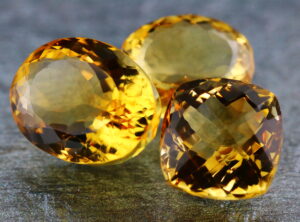 The first and most commonly used birthstone for November is
The first and most commonly used birthstone for November is  Citrine was particularly popular in colorful Scottish jewelry from the Victorian era and continued into the Art Deco era in the early 20th century, when Hollywood movie stars would wear elaborate citrine-adorned jewelry; a trend that has continued on the red carpet today. Fashion aside, citrine has been worn in hopes of improving blood circulation and strengthening the immune system. This healing gemstone is said to provide a calming, soothing, and comforting effect as well as spark imagination, encourage new beginnings, and help those suffering with seasonal affective disorder.
Citrine was particularly popular in colorful Scottish jewelry from the Victorian era and continued into the Art Deco era in the early 20th century, when Hollywood movie stars would wear elaborate citrine-adorned jewelry; a trend that has continued on the red carpet today. Fashion aside, citrine has been worn in hopes of improving blood circulation and strengthening the immune system. This healing gemstone is said to provide a calming, soothing, and comforting effect as well as spark imagination, encourage new beginnings, and help those suffering with seasonal affective disorder.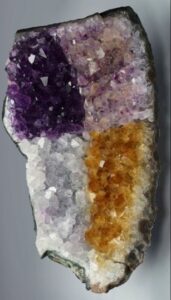 Natural citrine is more rare than heated citrine, so a good percentage of this gem on the market is heated. It still stems from a natural crystal; it just needed a little help getting its color. Much like all of us go to the beach to get a little color!
Natural citrine is more rare than heated citrine, so a good percentage of this gem on the market is heated. It still stems from a natural crystal; it just needed a little help getting its color. Much like all of us go to the beach to get a little color! Citrine, like many other gemstones, has fallen victim to misidentification in years past being often confused with its November birthstone counterpart, topaz. As a result of this, people believed citrine had some of the same powers and properties as topaz. Both thought to have calming energies while bringing fortune and warmth to the wearer. It is also one of the most abundantly available, most affordable, and desired yellow gemstones so there should be no trouble finding jewelry or specimens to give your spouse for your 13th anniversary, or for the Scorpio or Sagittarius in your life.
Citrine, like many other gemstones, has fallen victim to misidentification in years past being often confused with its November birthstone counterpart, topaz. As a result of this, people believed citrine had some of the same powers and properties as topaz. Both thought to have calming energies while bringing fortune and warmth to the wearer. It is also one of the most abundantly available, most affordable, and desired yellow gemstones so there should be no trouble finding jewelry or specimens to give your spouse for your 13th anniversary, or for the Scorpio or Sagittarius in your life.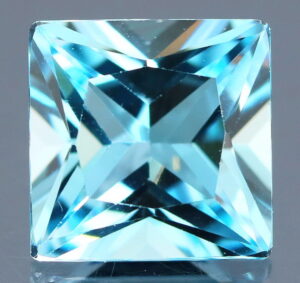 If your birthday lands in November and you are not a fan of yellow, have no fear! There is another gemstone representing your month that comes in a whole rainbow of colors and is still just as affordable. In its natural state,
If your birthday lands in November and you are not a fan of yellow, have no fear! There is another gemstone representing your month that comes in a whole rainbow of colors and is still just as affordable. In its natural state, 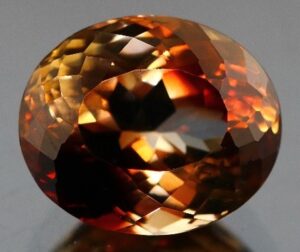
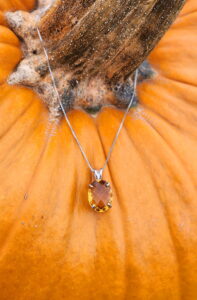 Imperial topaz is a very powerful manifestation stone, and it is thought to enhance one’s personal will, attract prosperity, as well as supporting visualization, creativity, and generosity. It is also representative of the 23rd wedding anniversary, so make sure you don’t forget to gift this royalty-worthy gemstone!
Imperial topaz is a very powerful manifestation stone, and it is thought to enhance one’s personal will, attract prosperity, as well as supporting visualization, creativity, and generosity. It is also representative of the 23rd wedding anniversary, so make sure you don’t forget to gift this royalty-worthy gemstone!
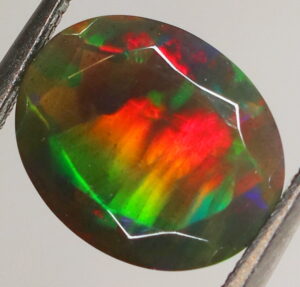 Those born in October not only get to enjoy sweater weather and all things spooky for their parties, but they also get to enjoy having some of the most unique birthstones as gifts! Opal and tourmaline both are known for their endless displays and combinations of color and stunning characteristics. While the traditional October birthstone is opal, many have adopted the modern option as their favorite for the color, qualities, and even the durability for everyday wear.
Those born in October not only get to enjoy sweater weather and all things spooky for their parties, but they also get to enjoy having some of the most unique birthstones as gifts! Opal and tourmaline both are known for their endless displays and combinations of color and stunning characteristics. While the traditional October birthstone is opal, many have adopted the modern option as their favorite for the color, qualities, and even the durability for everyday wear. Opals are a unique gem that have no substitute that is equal in color, flashing, or style. You can find them in a variety of hues, and from there you can find one with the perfect color/type of flashing for you! Their name is thought to have originated in India, where in Sanskrit they were called “upala” meaning a “precious stone,” and then “opalus” in ancient Rome, where they believed opals to be the most precious and powerful gemstone of all. In the Middle Ages opals were thought to provide great luck since it was thought to possess all the virtues of each gemstone whose color was represented within the gem. It was also said to grant the power of invisibility if wrapped in a fresh
Opals are a unique gem that have no substitute that is equal in color, flashing, or style. You can find them in a variety of hues, and from there you can find one with the perfect color/type of flashing for you! Their name is thought to have originated in India, where in Sanskrit they were called “upala” meaning a “precious stone,” and then “opalus” in ancient Rome, where they believed opals to be the most precious and powerful gemstone of all. In the Middle Ages opals were thought to provide great luck since it was thought to possess all the virtues of each gemstone whose color was represented within the gem. It was also said to grant the power of invisibility if wrapped in a fresh 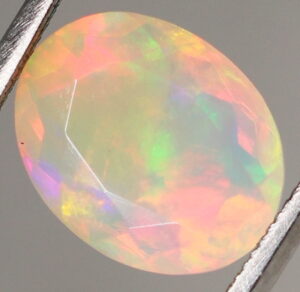 Ancient Greeks thought they bestowed the gift of prophesy and protection from disease. We can all definitely use that around this time of year!
Ancient Greeks thought they bestowed the gift of prophesy and protection from disease. We can all definitely use that around this time of year!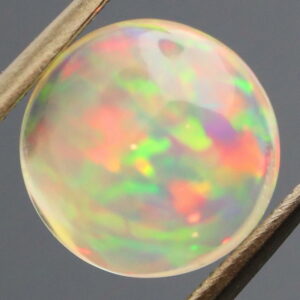 If you do decide to jump in and get them an incredible gift of some form of opal, keep in mind that they are a 5-6.5 on the Moh’s hardness scale so they can be susceptible to scratching if stored with other gem types. Diamonds, sapphires, emeralds, and even tourmalines to name only a few are on that list of harder gems that can be harmful to an opal. To keep them clean, the safest way is to simply use warm, soapy water. Other methods can be harmful and sudden temperature changes can also cause fracture. In general, they are fairly maintenance free and absolutely gorgeous gems that display an endless fiery spectacle to be loved for a very long time.
If you do decide to jump in and get them an incredible gift of some form of opal, keep in mind that they are a 5-6.5 on the Moh’s hardness scale so they can be susceptible to scratching if stored with other gem types. Diamonds, sapphires, emeralds, and even tourmalines to name only a few are on that list of harder gems that can be harmful to an opal. To keep them clean, the safest way is to simply use warm, soapy water. Other methods can be harmful and sudden temperature changes can also cause fracture. In general, they are fairly maintenance free and absolutely gorgeous gems that display an endless fiery spectacle to be loved for a very long time.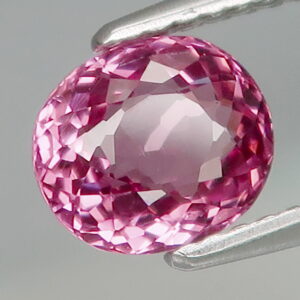 Our modern counterpart to the opal is none other than tourmaline. The name of this gem comes from the Sinhalese word “toramalli” meaning “mixed stone.” This can be taken a couple different ways since not only are tourmalines found in just about every color combination you can think of, but they have also been historically mistaken for many other gem types. For example; in the 1500s, green tourmaline was misidentified as emerald and continued to be until the 1800s, when it was tested to be a different mineral type. One of the “rubies” in the Russian crown jewels (the “Caesar’s Ruby” pendant) is actually red tourmaline, also referred to as rubellite. Yet another example of the mislabeling of our modern birthstone was of a Spanish conquistador who found green tourmaline crystals in Brazil in the 1500s and confused the stones with emerald. These and other cases of mistaken identity continued for centuries until it was tested and scientists recognized tourmaline as a distinct mineral typed in the 1800s. Chinese Empress Dowager Tzu-Hsi loved pink tourmaline so much that in the late 1800s, she bought almost the entire production from a California mine. When she passed, she was laid to rest on a pink tourmaline pillow. The remaining treasure trove of pink tourmaline was then used to make carvings.
Our modern counterpart to the opal is none other than tourmaline. The name of this gem comes from the Sinhalese word “toramalli” meaning “mixed stone.” This can be taken a couple different ways since not only are tourmalines found in just about every color combination you can think of, but they have also been historically mistaken for many other gem types. For example; in the 1500s, green tourmaline was misidentified as emerald and continued to be until the 1800s, when it was tested to be a different mineral type. One of the “rubies” in the Russian crown jewels (the “Caesar’s Ruby” pendant) is actually red tourmaline, also referred to as rubellite. Yet another example of the mislabeling of our modern birthstone was of a Spanish conquistador who found green tourmaline crystals in Brazil in the 1500s and confused the stones with emerald. These and other cases of mistaken identity continued for centuries until it was tested and scientists recognized tourmaline as a distinct mineral typed in the 1800s. Chinese Empress Dowager Tzu-Hsi loved pink tourmaline so much that in the late 1800s, she bought almost the entire production from a California mine. When she passed, she was laid to rest on a pink tourmaline pillow. The remaining treasure trove of pink tourmaline was then used to make carvings.  Very few gemstones rival tourmaline’s dazzling assortment of colors. Perhaps this is one of the reasons ancient mystics believed it could inspire artistic expression having a palette for every mood. To achieve the wide variety of colors, boron compounds with elements like aluminum, iron, magnesium, sodium, and more. The hue most commonly found is black or green but can also range from colorless all the way to violet and occur as bi-colored or even tri-colored. Different hues of the gem are thought to have their own healing properties, with pink being the embodiment of love and is associated with compassion and gentleness. It’s no wonder why this specific hue was selected as the prime candidate for the modern birthstone!
Very few gemstones rival tourmaline’s dazzling assortment of colors. Perhaps this is one of the reasons ancient mystics believed it could inspire artistic expression having a palette for every mood. To achieve the wide variety of colors, boron compounds with elements like aluminum, iron, magnesium, sodium, and more. The hue most commonly found is black or green but can also range from colorless all the way to violet and occur as bi-colored or even tri-colored. Different hues of the gem are thought to have their own healing properties, with pink being the embodiment of love and is associated with compassion and gentleness. It’s no wonder why this specific hue was selected as the prime candidate for the modern birthstone!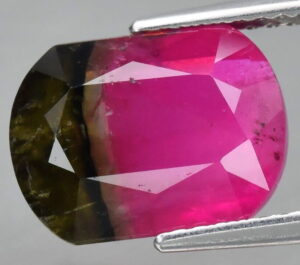 Yet another justification for them to have been considered “mystical” all those years ago.
Yet another justification for them to have been considered “mystical” all those years ago.
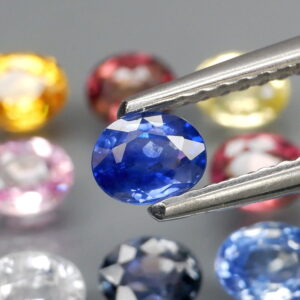 For most Virgos and Libras, sapphire has been engrained in your mind and placed in your jewelry boxes for your entire lives. Those aware that this gem comes in a whole rainbow of colors or are fans of the color blue may not have an issue with this, but what about those who want to be different yet still want to represent their birth sign? Don’t worry, there’s a gem for you! Moonstone is the other birthstone for September and has plenty of history and unique traits that enable it to be a worthy adversary for all the Virgos and Libras out there.
For most Virgos and Libras, sapphire has been engrained in your mind and placed in your jewelry boxes for your entire lives. Those aware that this gem comes in a whole rainbow of colors or are fans of the color blue may not have an issue with this, but what about those who want to be different yet still want to represent their birth sign? Don’t worry, there’s a gem for you! Moonstone is the other birthstone for September and has plenty of history and unique traits that enable it to be a worthy adversary for all the Virgos and Libras out there. Rubies get their red color from traces of chromium, while a plethora of other trace elements give sapphires a wide range of colors. There are several types within the sapphire umbrella such as star and parti, all displaying amazing vitreous lusters. The star sapphire has been referred to as the “Stone of Destiny” by Christians, associating the three crossbars of the star with faith, hope, and destiny. Corundum star stones have three crossbars and six rays, while other gem types, like
Rubies get their red color from traces of chromium, while a plethora of other trace elements give sapphires a wide range of colors. There are several types within the sapphire umbrella such as star and parti, all displaying amazing vitreous lusters. The star sapphire has been referred to as the “Stone of Destiny” by Christians, associating the three crossbars of the star with faith, hope, and destiny. Corundum star stones have three crossbars and six rays, while other gem types, like 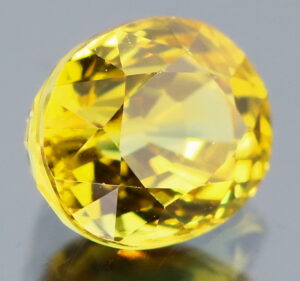 A maiden born when September leaves
A maiden born when September leaves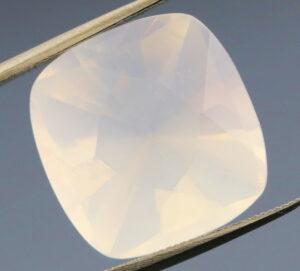 Moonstone is a variety of feldspar in the mineral group orthoclase. During formation, orthoclase and albite separate into alternating layers, and when light diffracts between them, it produces a phenomenon called adularescence where a ghostly sheen moves under the surface, like moonlight glowing in water. This also popularly occurs in labradorite and sanidine. It occurs in shades of ethereal white, blue, and even pale peach and yellow hues—just like the moon in all its phases. The form possessed with the most mystical properties is also the rarest. This is the clear stone with a blue shimmer that seems to be both inside and outside the stone at the same time, like a moon glow.
Moonstone is a variety of feldspar in the mineral group orthoclase. During formation, orthoclase and albite separate into alternating layers, and when light diffracts between them, it produces a phenomenon called adularescence where a ghostly sheen moves under the surface, like moonlight glowing in water. This also popularly occurs in labradorite and sanidine. It occurs in shades of ethereal white, blue, and even pale peach and yellow hues—just like the moon in all its phases. The form possessed with the most mystical properties is also the rarest. This is the clear stone with a blue shimmer that seems to be both inside and outside the stone at the same time, like a moon glow.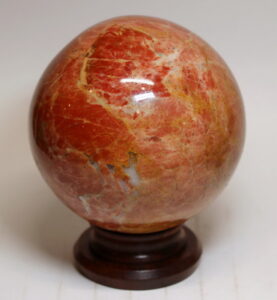 Moonstone is also thought to be a symbol of light and hope and represents inner clarity.
Moonstone is also thought to be a symbol of light and hope and represents inner clarity.
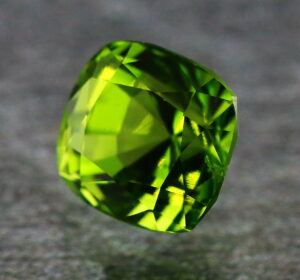 is a form of the mineral olivine with a deep yellowish green hue. It is one of the few gemstones that only occurs in one color! The intensity and tint of its hue is dependent on the level of iron content, with variants going from a light greenish-yellow all the way to a brownish-green. Peridot has been mistaken for several other gems throughout its history, but this olive-colored beauty has become a staple in the gemstone and jewelry worlds taking its place as the official August birthstone.
is a form of the mineral olivine with a deep yellowish green hue. It is one of the few gemstones that only occurs in one color! The intensity and tint of its hue is dependent on the level of iron content, with variants going from a light greenish-yellow all the way to a brownish-green. Peridot has been mistaken for several other gems throughout its history, but this olive-colored beauty has become a staple in the gemstone and jewelry worlds taking its place as the official August birthstone. It is also considered a warm and joyful gem that can ease anger and jealousy.
It is also considered a warm and joyful gem that can ease anger and jealousy. While you can find peridot jewelry and gems fairly easily in a store or on your computer, if you want to try and find some in the wild, there is a place that you can go! Papakōlea Beach is a green sand beach located near
While you can find peridot jewelry and gems fairly easily in a store or on your computer, if you want to try and find some in the wild, there is a place that you can go! Papakōlea Beach is a green sand beach located near  So, if you are looking for a getaway where you can do some gem sifting on the beach, head to Hawaii!
So, if you are looking for a getaway where you can do some gem sifting on the beach, head to Hawaii!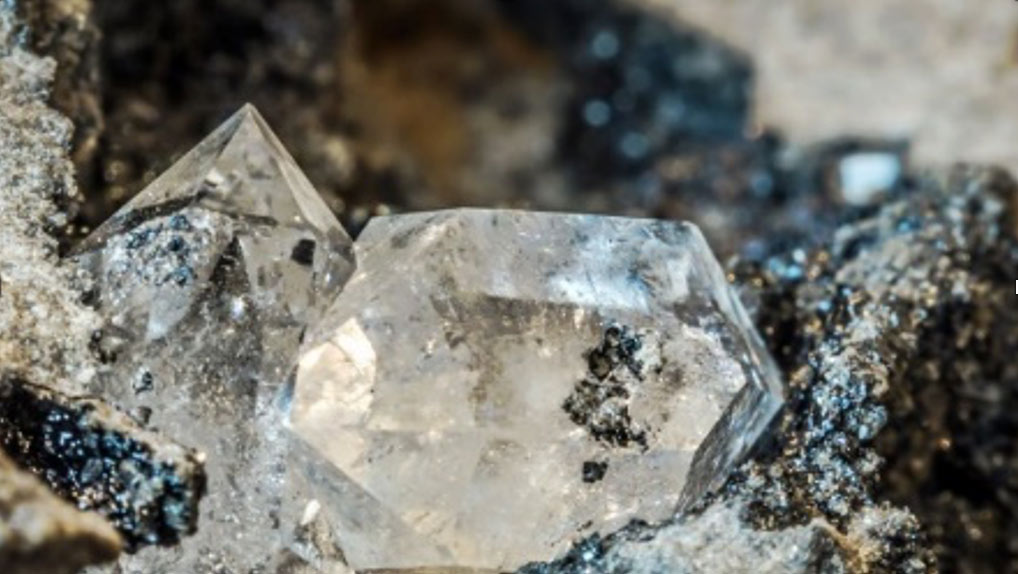
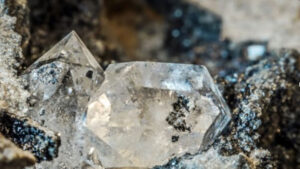 Symbolizing strength, victory, wealth, abundance, and everlasting love, diamonds hold the title of April’s official birthstone. In Sanskrit, diamond is called vajra—meaning lightning—which was the weapon of Indra, the king of the gods. They display brilliance and fire that sparkles throughout jewelry stores all over the world. While their specific sparkle can’t quite be equally matched, there are alternative birthstones that have a beauty all their own and may be more cost effective—which allows you to buy more for your Aries sweetheart!
Symbolizing strength, victory, wealth, abundance, and everlasting love, diamonds hold the title of April’s official birthstone. In Sanskrit, diamond is called vajra—meaning lightning—which was the weapon of Indra, the king of the gods. They display brilliance and fire that sparkles throughout jewelry stores all over the world. While their specific sparkle can’t quite be equally matched, there are alternative birthstones that have a beauty all their own and may be more cost effective—which allows you to buy more for your Aries sweetheart!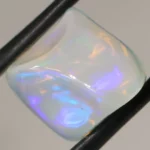 where opal was crowned the October birthstone, but it can still be used as an alternative for the diamond. Especially white or jelly opals that have a light or translucent backing with fiery displays of a rainbow of color. Sapphires are believed to promote inner peace and serenity, as well as help release mental tension and depression. They are also thought to promote self-expression and spiritual growth. In this way, they have similar psychological benefits due to diamonds similarly stimulating creativity and reducing mental tension and depression.
where opal was crowned the October birthstone, but it can still be used as an alternative for the diamond. Especially white or jelly opals that have a light or translucent backing with fiery displays of a rainbow of color. Sapphires are believed to promote inner peace and serenity, as well as help release mental tension and depression. They are also thought to promote self-expression and spiritual growth. In this way, they have similar psychological benefits due to diamonds similarly stimulating creativity and reducing mental tension and depression.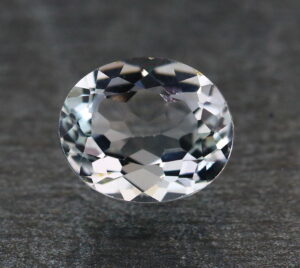 Although they may not have the same level of hardness that diamonds possess, with quartz being a 7 and white topaz coming in at an 8 out of 10 on the Moh’s hardness scale, they are still harder than opals and plenty durable for everyday wear. When it comes to engagement rings, many jewelry companies promote white topaz as an alternative to diamonds since it is significantly less expensive and can have incredible clarity. When cut, white topaz can display a brilliant sparkle that is not far off from that of a diamond, and to the untrained eye may be indistinguishable. For any large setting, choosing a white topaz or quartz will get you more for your money so you can get the matching earrings, bracelet, ring, and tiara to match!
Although they may not have the same level of hardness that diamonds possess, with quartz being a 7 and white topaz coming in at an 8 out of 10 on the Moh’s hardness scale, they are still harder than opals and plenty durable for everyday wear. When it comes to engagement rings, many jewelry companies promote white topaz as an alternative to diamonds since it is significantly less expensive and can have incredible clarity. When cut, white topaz can display a brilliant sparkle that is not far off from that of a diamond, and to the untrained eye may be indistinguishable. For any large setting, choosing a white topaz or quartz will get you more for your money so you can get the matching earrings, bracelet, ring, and tiara to match!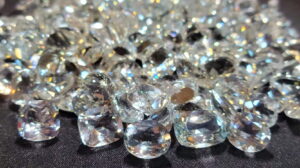 For anyone who has a loved one with an April birthday, don’t fret! The perfect gift doesn’t have to be a diamond. It can be any one of its alternatives, that all have their own sparkle and brilliance and will be sure to impress. If you are looking to create a personalized gift for the Aires in your life, head to Backroom Gems to find dazzling, cost effective diamond alternative gems such as white topaz today!
For anyone who has a loved one with an April birthday, don’t fret! The perfect gift doesn’t have to be a diamond. It can be any one of its alternatives, that all have their own sparkle and brilliance and will be sure to impress. If you are looking to create a personalized gift for the Aires in your life, head to Backroom Gems to find dazzling, cost effective diamond alternative gems such as white topaz today!







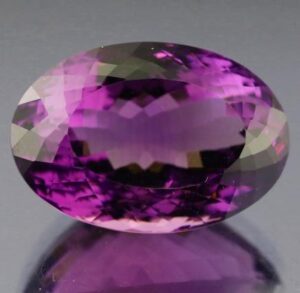
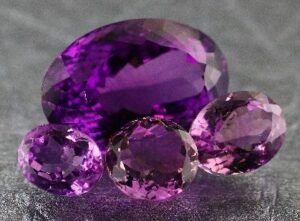 The meaning and use of amethyst vary between cultures and times. For example, it was used in ancient China as a tool to remove negative energies and the hazards of daily life, while medieval European soldiers wore amethyst for protection since they believed it could heal and keep them level-headed in battle.
The meaning and use of amethyst vary between cultures and times. For example, it was used in ancient China as a tool to remove negative energies and the hazards of daily life, while medieval European soldiers wore amethyst for protection since they believed it could heal and keep them level-headed in battle.
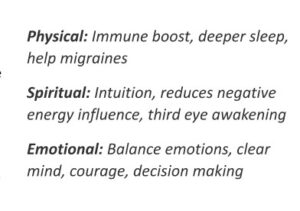
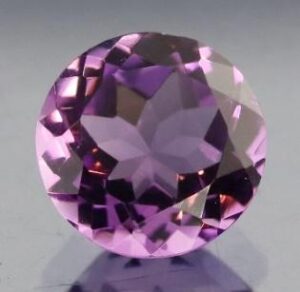 If the legends and ancient Greeks can be trusted, draping clubs in amethyst may be the aesthetic of the future! For now, though, you can find some amethyst to adorn yourself and keep a clear mind with at
If the legends and ancient Greeks can be trusted, draping clubs in amethyst may be the aesthetic of the future! For now, though, you can find some amethyst to adorn yourself and keep a clear mind with at